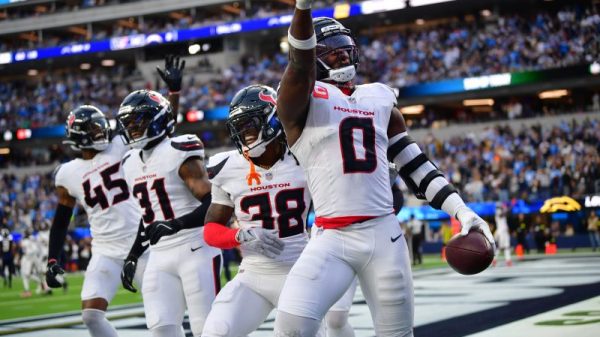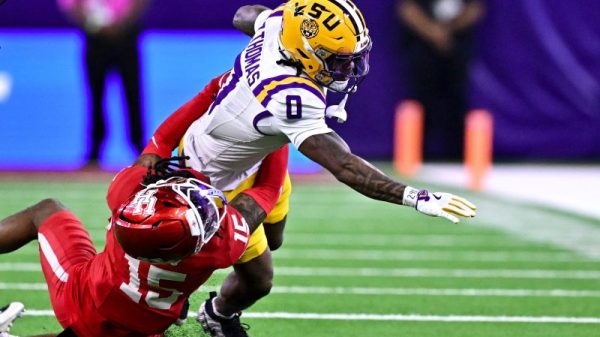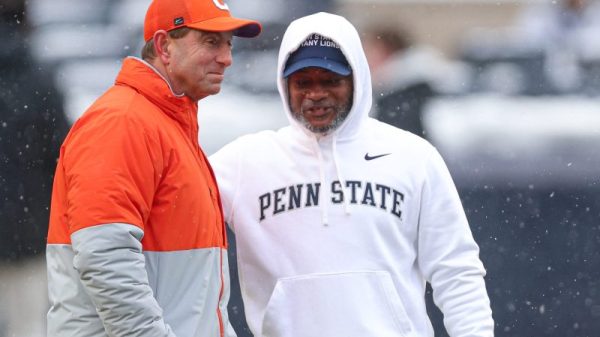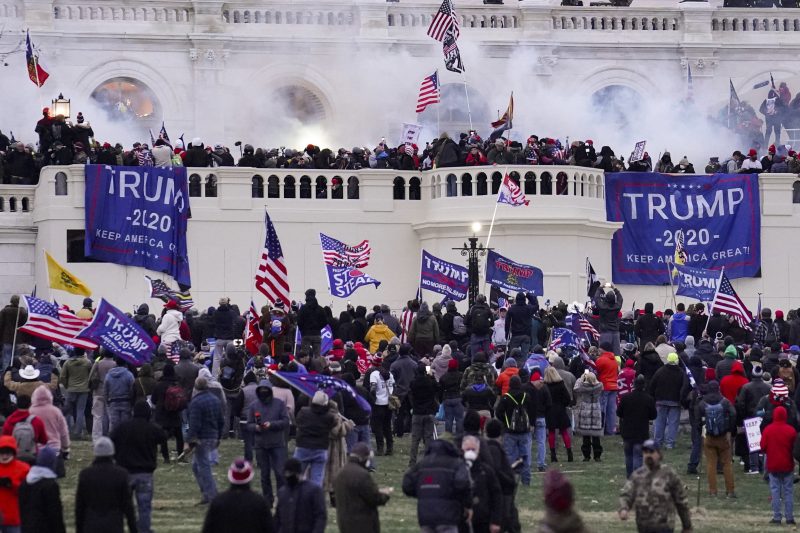No serious person thinks Donald Trump doesn’t deserve primary blame for the riot at the Capitol on Jan. 6, 2021.
Yes, law enforcement was unprepared — surprisingly, given the number of warnings we now know they were given. And, yes, there were violent agitators in Washington who helped trigger the rush toward the building. But those factors depended on Trump seeding the day with furious, false rhetoric and an enormous mass of angry supporters.
He spent the months after the 2020 election trying to retain power by any means possible, including encouraging Vice President Mike Pence to subvert the election results on Jan. 6 itself. Trump repeatedly lied about election fraud, claiming that the election had been stolen from him, which it hadn’t been. He embraced any and all theories about how this had happened, swapping in new iterations for ones that were debunked beyond salvage.
Then, of course, he focused on D.C. on that day. He encouraged people to show up on Jan. 6, promising the day would be “wild.” At a speech that morning, he continued to make false claims about the election, demanding that his audience head to the Capitol despite knowing that many were carrying weapons. As people in the mob were swarming into the Capitol, he pointed them at Pence, who still theoretically had the ability to do what Trump wanted.
“If this happened to the Democrats, there’d be hell all over the country going on. There’d be hell all over the country. But just remember this: You’re stronger, you’re smarter, you’ve got more going than anybody,” Trump told them in that speech.
“We want to get this right because we’re going to have somebody in there that should not be in there and our country will be destroyed and we’re not going to stand for that,” he said.
“Republicans are constantly fighting like a boxer with his hands tied behind his back. … We’re going to have to fight much harder,” he said.
“We fight. We fight like hell. And if you don’t fight like hell, you’re not going to have a country anymore,” Trump told the crowd. Then the speech ended a few minutes later, and many of those in the audience went and fought like hell.
But as he seeks his third straight Republican Party presidential nomination, this narrative is increasingly unhelpful. Republicans are worried about Trump’s electability, and many see him as too extreme. Jan. 6 is a potent reminder of a near-worst-case scenario that could follow returning Trump to power — the worst case being if he had succeeded.
So Trump’s campaign on Tuesday produced a document dismissing the idea that he is responsible for the day’s events. In it, he assails the usual suspects, claiming falsely that he’d called for thousands of troops to guard the building and blaming Democratic leaders for the failure to keep the building safe.
He also introduced a new culprit: Twitter.
“Recently, it was shockingly revealed that Twitter colluded with the FBI and other law enforcement agencies to Rig and Steal the 2020 Presidential Election in favor of Joe Biden, and to deplatform and illegally censor me,” the document begins. All of that is false, of course: There’s no evidence that the FBI and Twitter “colluded” against Trump, and Twitter’s actions before the election had no obvious effect on the outcome. But, you know, par for the course.
His argument, in essence, is that his removal from Twitter after the riot made his tweets inaccessible, meaning that his calls for peace after the riot began were hidden from sight.
“The two exonerating tweets, and the Rose Garden Video, which were posted in the early afternoon of January 6, 2021, and attempted to be hidden by the Unselect January 6th Committee,” the document reads, “clearly and unquestionably state my desire that all protesters be peaceful and follow the Law.”
The document includes the two tweets:
This is a characteristically weak argument.
First, the idea that locking Trump’s Twitter account somehow obscured these tweets from view is ridiculous. No Twitter user has had his messages more thoroughly documented than the former president, and anyone seeking to know what Trump said on that day could do so easily. (Here or here or here, for example.) The reason these tweets weren’t used to exonerate him of culpability for the riot isn’t that no one could find them, it’s that they aren’t exonerating.
What’s missing from the screenshots included in the document is the time each tweet was sent. The first (shown second above) was published at 2:38 p.m. The other came out at 3:13 p.m.
Each came more than an hour after Trump was told by a White House staffer that the mob had pushed past law enforcement at the Capitol. They came more than half an hour after rioters had entered the building itself.
And they came after Trump tweeted his angry attack on Pence at 2:24 p.m.
Trump deleted that tweet, which is why it’s not among those he boasts of having sent that day. (And, for what it’s worth, this incriminating tweet was mentioned by the House select committee investigating the Jan. 6 attack, undercutting the idea that all of Trump’s tweets were somehow hidden from view.)
At other points in the document, Trump does the sort of cherry-picking that is by now a well-established component of efforts to defend him. He isolates lines from his speech in which he called for rally attendees to “peacefully and patriotically make your voices heard” — ignoring that this line followed his calls for them to fight and came at the tail end of a sentence in which he encouraged them to march to the Capitol.
Most ridiculous, though, are Trump’s efforts to suggest that the actual perpetrators of violent rhetoric are Democrats.
Rep. “Maxine Waters encouraged her supporters to ‘get more confrontational,’” the document states, a reference to comments made by Waters (Calif.) at the time that former Minneapolis police officer Derek Chauvin was being tried for the murder of George Floyd. He mentioned other examples of purported violent rhetoric, complaining that “despite those horrible and hate-filled words and violence, there has never been any effort to hold these politicians responsible or accountable for their wrongful statements, despite the death and destruction caused.”
Waters’s words, of course, led to no obvious death or destruction. Even if there had been deadly riots in the wake of those April 2021 comments, Waters wouldn’t have been centrally responsible for them. It wasn’t Waters who presented the idea that there was an injustice to be addressed in regards to police killings of Black Americans. It was also not the case that Waters had invented that perceived injustice for her own benefit. It was not the case that Waters was speaking to an angry group of people, telling them they needed to fight and encouraging them to march on police headquarters. None of which actually happened, of course.
Trump wants to praise those who stormed the Capitol as victims of an overzealous federal government and to claim that the riot wasn’t his fault in the first place. He wants to have his riot and disown it, too.
Once again, though, Trump and reality are very obviously in disagreement.



























